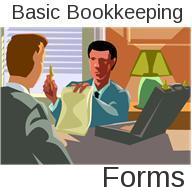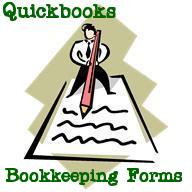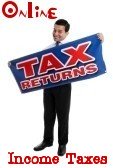- Home
- Questions and Answers
- Two Party Check to Company and Vendor
Local Company Marshalls Bookkeeping Question
Can I buy merchandise from Marshalls with a company card and export this merchandise in Europe even Marshall doesn't issue an invoice on my company name, only a receipt with cc number and merchandise description?
Can I recover the tax for the exported merchandise bought on local company from Marshalls? Thank you so much for your advice!
Comments for Local Company Marshalls Bookkeeping Question
|
||
|
||
Buying Out Company Shares
We have a client who previously owned his company with his former wife. He owned 51% and she owned 49%. They were divorced in 2009 and he bought out her shares of the company. Cash was credited but we aren't sure what account to debit. Can you help?
Hi,
Thank you for your question. I believe the debit would be to Partner 2 Owner's Equity account which would then be closed out at the end of the year.
Comments for Buying Out Company Shares
|
||
|
||
Company Stock
If you invest a truck into a company in exchange for company stock what accounts do you use to journalize it and if you sell the truck what accounts do you use to journalize the sale?
Comments for Company Stock
|
||
|
||
Construction Company
by Shannon
(Sedalia, CO)
Classify bike racks and park benches that we as the prime contractor have to pay for. For example would it be considered a Material, or a supply, or something else?
Comments for Construction Company
|
||
|
||
Limited Liability Company
How do I post the entries when one member of a LLC sells out for cash and one of the company vehicles? The other member wrote a company check to pay the cash portion. Thanks, Lori
Comments for Limited Liability Company
|
||
|
||
Pre-Acquisition Retained Earning
by Kash
(Burlington)
Company A, an S Corp, has profit for 2010, while Company B, a C Corp, has a current year operating loss for 2022 and negative retained earnings carried forward from previous years. In September 2022 Company A wants to acquire Company B.
Can Company A utilize Company B's pre-acquisition 2010 loss and/or previous years' negative retained earnings against Company A's profit after the acquisition for tax benefits?
There is no reorganization, and the acquisition will include paying off stockholders, payables, and purchasing Company B's patent.
Would it be more advantageous for Company A to simply purchase the patent from Company B, close Company B, and bring the patent into Company A's balance sheet, either amortizing it or using Section 179?
Comments for Pre-Acquisition Retained Earning
|
||
|
||
Starting a Business With Loan to Company
by Chris
(South Africa)
I'm starting a business and just learning about setting up the chart of accounts etc. I was wondering if I start off the business with capital as a loan from myself (the owner), to which account do I post this loan or how do I record this amount as an opening balance?
Two Party Check to Company and Vendor
by Ella
(NH)
We recieved payment for work done. The customer deducted amount owed to our vendor, and wrote a party check. I am not sure how to post this in quickbooks. I need to show that the vendor was paid.
Thank you for your time and help.
Please subscribe to my monthly newsletter, Bookkeeping Basics E-zine. It tells you every month about the new information that I have added, including some great tips and advice from myself and other Bookkeeping Basics readers.
Like Bookkeeping-Basics.net?
- Home
- Questions and Answers
- Two Party Check to Company and Vendor













